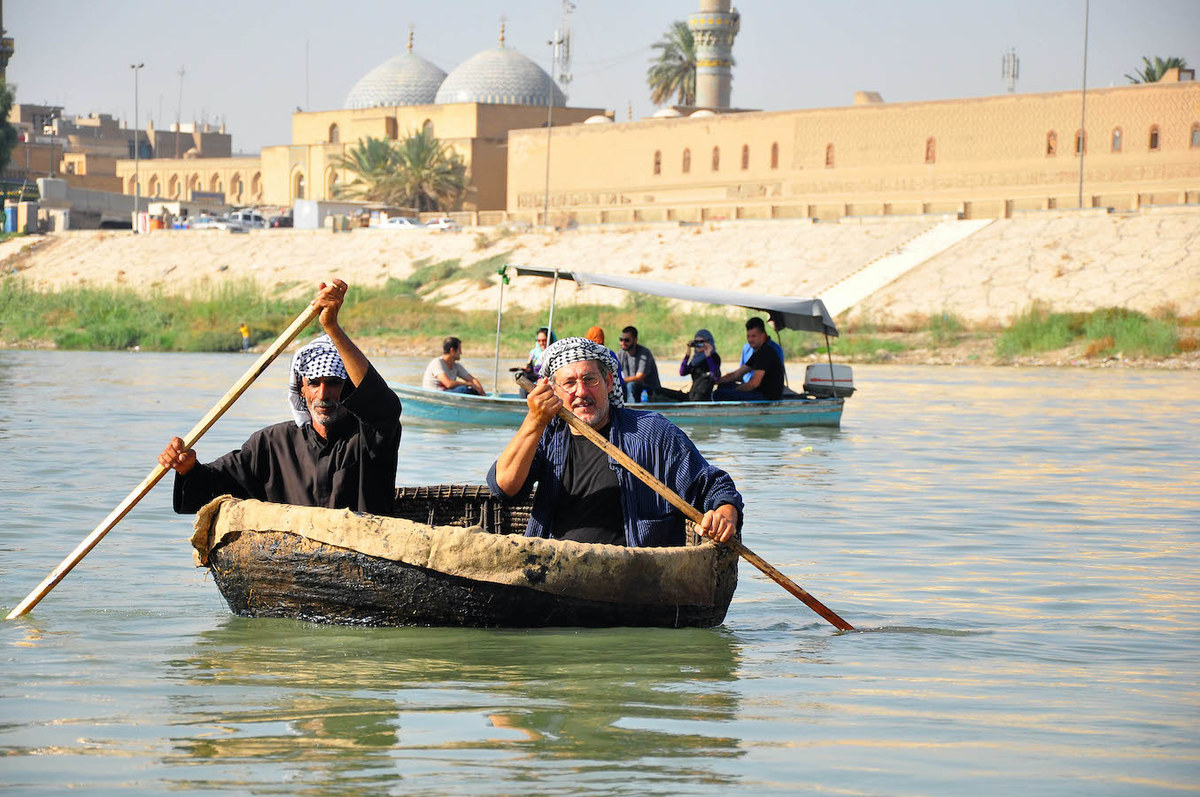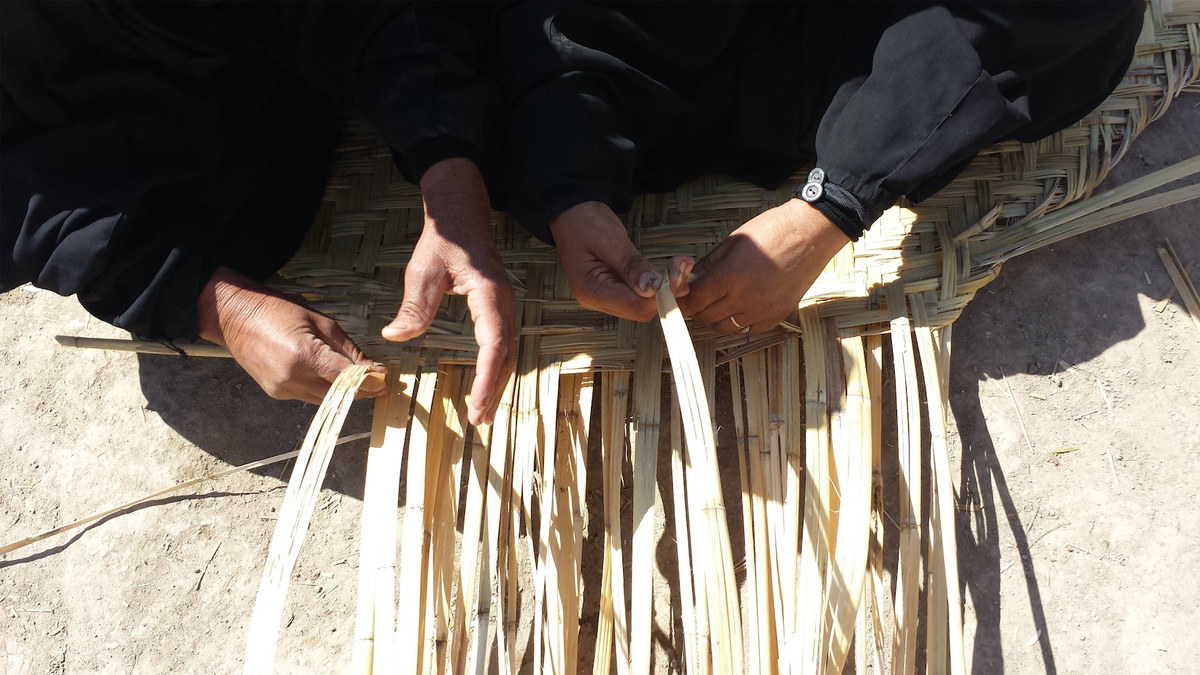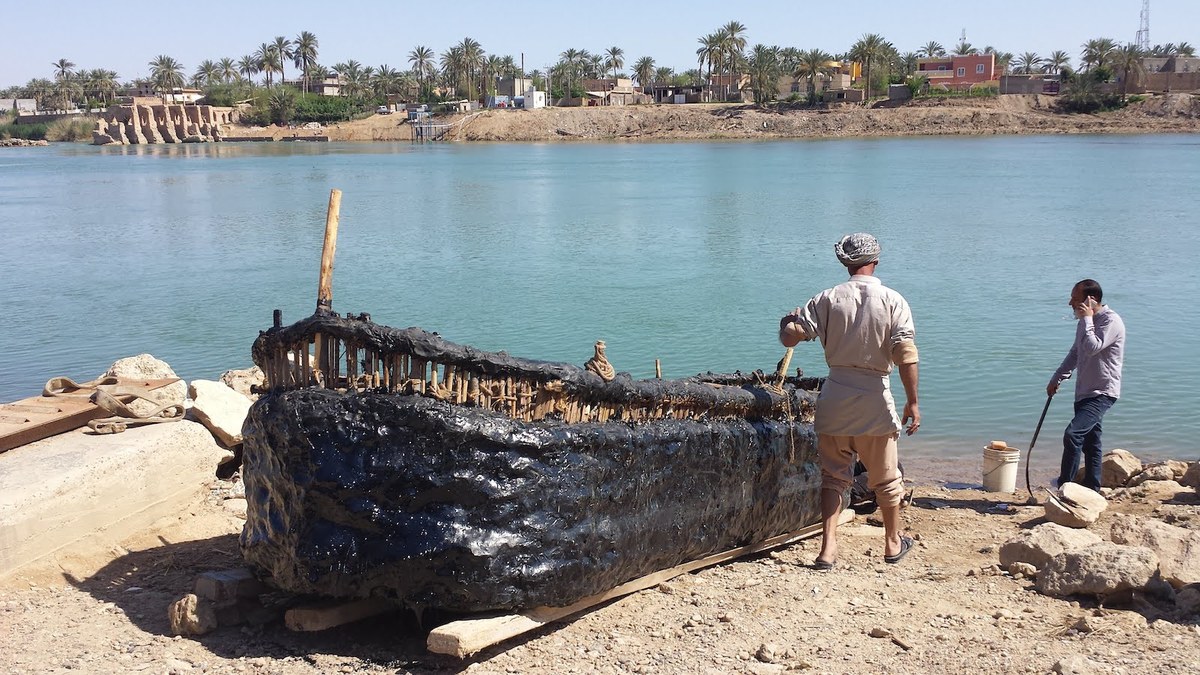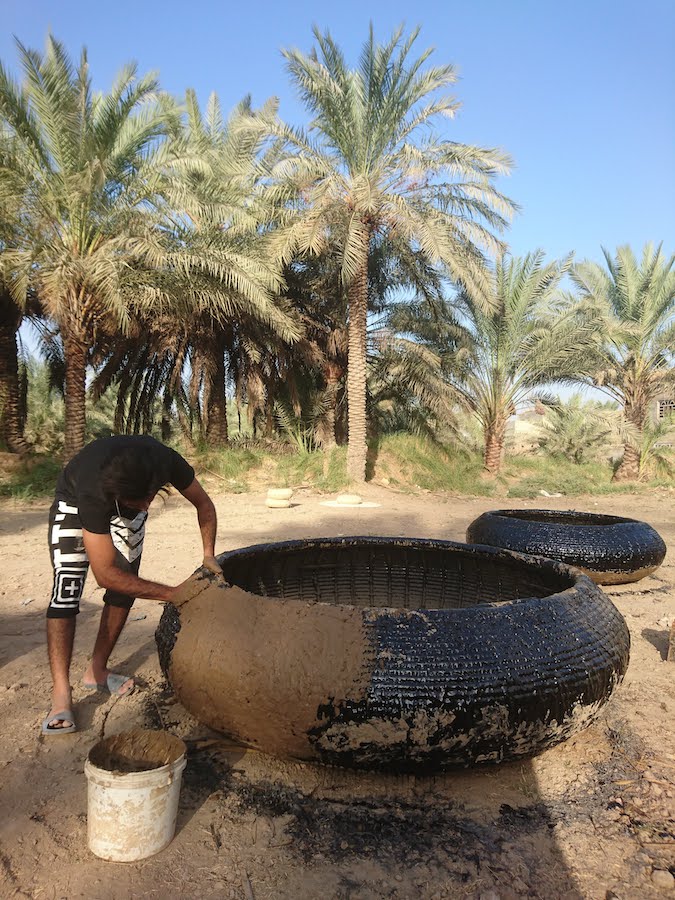DUBAI: “We’re speaking about a culture that has been ignored,” says the Iraqi-German artist Rashad Salim. “There has been no work done on vernacular architecture as part of our cultural heritage. We used to have independent anthropologists and ethnologists and people interested in vernacular culture, but since the invasion and occupation of Iraq things have really gone downhill.”
Salim, who has dedicated his artistic career to the protection and revival of the ancient crafts of Iraq, is talking about something he cares passionately about: the traditional boatbuilding, architecture and craftsmanship of central, southern and western Iraq. It’s a culture that has suffered repeated tragedy and been brought to the brink of extinction by conflict, displacement, and an often bewildering collective trauma.
In his own way, Salim has sought to actively counter this neglect through the Ark Re-imagined project, which engages with artisans across the country in a bid to revive and document what remains of traditional practices. First launched in 2016, the initiative now falls under Safina Projects, a creative studio co-founded by Salim and Hannah Lewis in 2017.

Rashad Salim - Mesopotamia in Venice. (Supplied)
“Wherever I’ve travelled in Iraq, you find locals who have the memory of their place, who have the memory of their environment,” he says. “This is the culture that built civilization. But this is the very first time in our history that Iraq has been so undermined, so corrupted, that the essential fabric — that of the connection with the environment, with the culture that engages with the land and creates the means of living — has been undermined and is on the brink of extinction. And I see that as exemplified by boats.”
Boats are at the heart of Ark Re-imagined, which challenges Western concepts of Noah’s Ark, and almost every other initiative under the Safina Projects banner. Through Ark for Iraq, the studio has sought to ‘revive, protect and study’ the traditional boats of the Tigris and Euphrates rivers, helping to transfer knowledge to a new generation. They have helped to revive the guffa (a coracle made of wickerwork), whose only remaining practitioner was an elderly woman from Hillah in central Iraq, and produced handmade rope in Ayn al-Tamr. By doing so, they have ensured a cultural continuum.
It is Ark Re-imagined, however, that is set to shine a light on Iraq’s maritime heritage at this year’s Biennale Architettura in Venice. Running from May 22 until November 21, ‘Ark Re-imagined: the Expeditionary Pavilion’ will be Iraq’s first participation in the biennale. Supported by Community Jameel and Culturunners, the project will not only celebrate the vernacular architecture and watercraft of the Tigris-Euphrates river system, but address the title of this year’s exhibition: “How will we live together?” After all, the original message of the Ark was one of unity and gathering.

Abu Hyder and Rashad – Qishla old Baghdad. (Supplied)
“The concept of the Ark is not just five years’ work,” says Salim. “It’s been 40 years of work. For five years I’ve been working in Iraq directly, revitalizing and recreating boats that have disappeared, and that has been an academic project grounded in my sensibilities as an artist. Now we’re looking at how to take that and re-engage with the arts side through the biennale.”
Salim first visited the marshes of southern Iraq in 1976 as a young art student. The following year he joined the Norwegian explorer Thor Heyerdahl’s Tigris expedition, sailing a reed boat from the Shatt al-Arab, through the Arabian Gulf to Pakistan, and on to the Red Sea. It was an experience that changed his life and has informed his work ever since.
“The Tigris, being fully organic and tensile, was like riding on a body,” he remembers. “The way it moved on the water was very different from a displacement boat with a keel… We were travelling at the speed of a bicycle at most, and being very close to the water (at one point no more than 30 centimeters above the water level), you could see the complexity of life – waves within waves and the life on the surface of the water. So it was profoundly influential for me and set in motion an interest in the deeper story of boats and their role in the development of civilization.”

Reed mat weaving, Rashad Salim 2016. (Supplied)
It is this deeper story, as well as his love for the grace, purity and simplicity of traditional boatbuilding, that would ultimately lead to Ark Re-imagined.
“The question that we have posited is: How would the Ark have been built in its time and place? Because, obviously, the Western image of the Ark has nothing to do with the time and place of the story. It’s a 17th-century cog basically. It doesn’t relate in any way to the place, the technologies, the materials and the techniques that would have been available at the time. And we found in our fist visits to Venice that in the marshes of Venice they had the same techniques of building, the same type of boats, and the same type of engagement with their environment as in Mesopotamia. Had an ark been built in Europe, it would have been built in the same way as in Mesopotamia at the time, which is tensile. We’re talking about a period well before metal allowed us to work with wood in the way that you’d create a cog.”
Ark Re-imagined will take various forms. It began with a conversation between Salim and Markus Reymann, director of the TBA21–Academy, at Ocean Space on May 20. Mooring sites are being secured for two different installations — a grand sheikh’s tarada (a large diplomatic canoe) and a floating reed house — and courtyard entrances will display the wares traditionally sold by merchants. The idea is for the mooring sites to shift location throughout the duration of the six-month exhibition. In addition, two films about Ark Re-imagined’s work in Iraq are to be screened, while life inside the ark will be represented by Izar, the traditional hook embroidery of southern Iraq. The focal point, however, will be the tarada, which is being specially built for the exhibition. Called “Faisaliyah,” after Faisal I of Iraq, it is 11.8 meters long and will move from Iraq to Venice at some stage during the exhibition.

Reconstructed Delil barge on the riverbank at Hit, Rashad Salim, 2019. (Supplied)
There’s another element, too — that of the healing quality of art. Both the pavilion and the documentation of the project are being supported by the Iraq Cultural Health Fund, which has been created by Community Jameel and Culturunners within The Future is Unwritten Artists’ Response Fund. The pavilion programme has also been developed in conversation with the Healing Arts initiative, which was launched last year in partnership with the WHO Foundation under the auspices of the World Health Organization (WHO). Ark Re-imagined is the first project supported by the Iraq Cultural Health Fund.
“Ark Re-imagined is an example of working with communities on healing. On using art as a health intervention,” says Christopher Bailey, arts and health lead at the WHO. “In this case there are multiple dimensions to the problem. We have a community of people — the Marsh Arabs — who have been facing successive catastrophes over the years; from the intentional draining of their habitat, to the expulsion of their people and the loss of traditional knowledge, all of which has contributed to a cultural crisis in that community.

Guffa coracle with tar and adobe coating, Rashad Salim, 2018. (Supplied)
“It asks ‘How can we take this knowledge that has been lost, or is on the verge of being lost, and, by retraining a new generation in this craft, imagine a kind of conceptual ark – a new hope – of how to not only preserve what was on the verge of being lost through successive catastrophes, but imagine a new place that this craft can carry us to?’ I just found that an extremely powerful metaphor.”
Salim will be in Venice for the first five days of the Biennale Architettura, before heading to Baghdad and Basra, where a parallel installation of certain crafts will be taking place. He will then return to Venice and be constantly on the move.
“It’s been three years that I’ve been working on this and I’ve designed I don’t know how many shows in my head,” he says. “We are here as an expedition. We’re here to create a connection, to create an engagement, to have a cultural conversation, and to bring students together and to show them that we have always lived together.”











